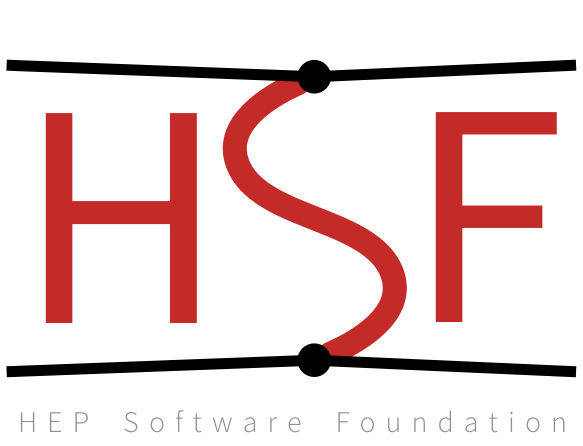Data Science at LHC 2015
Deep Leaning implementation.
Short description:
The DNN neural network is a feedforward multilayer perceptron impementation. The DNN has a user-defined hidden layer architecture, where the number of input (output) nodes is determined by the input variables (output classes, i.e.,signal and one background, regression or multiclass).
Performance optimisation:
Short description:
The DNN neural network is a feedforward multilayer perceptron impementation. The DNN has a user-defined hidden layer architecture, where the number of input (output) nodes is determined by the input variables (output classes, i.e.,signal and one background, regression or multiclass). Performance optimisation:
The DNN supports various options to improve performance in terms of training speed and reduction of overfitting:
-
different training settings can be stacked. Such that the initial training is done with a large learning rate and a large drop out fraction whilst in a later stage learning rate and drop out can be reduced.
-
drop out [recommended: initial training stage: 0.0 for the first layer, 0.5 for later layers. later training stage: 0.1 or 0.0 for all layers final training stage: 0.0] Drop out is a technique where a at each training cycle a fraction of arbitrary nodes is disabled. This reduces co-adaptation of weights and thus reduces overfitting.
-
L1 and L2 regularization are available
-
Minibatches [recommended 10 - 150] Arbitrary mini-batch sizes can be chosen.
-
Multithreading [recommended: True] Multithreading can be turned on. The minibatches are distributed to the available cores. The algorithm is lock-free ("Hogwild!"-style) for each cycle.
Options:
example:
\"Layout\": \"TANH|(N+30)*2,TANH|(N+30),LINEAR\"
meaning: . two hidden layers (separated by ",") . the activation function is TANH (other options: RELU, SOFTSIGN, LINEAR) . the activation function for the output layer is LINEAR . the first hidden layer has (N+30)*2 nodes where N is the number of input neurons . the second hidden layer has N+30 nodes, where N is the number of input neurons . the number of nodes in the output layer is determined by the number of output nodes and can therefore not be chosen freely.
"ErrorStrategy":
- SUMOFSQUARES The error of the neural net is determined by a sum-of-squares error function For regression, this is the only possible choice.
- CROSSENTROPY The error of the neural net is determined by a cross entropy function. The output values are automatically (internally) transformed into probabilities using a sigmoid function. For signal/background classification this is the default choice. For multiclass using cross entropy more than one or no output classes can be equally true or false (e.g. Event 0: A and B are true, Event 1: A and C is true, Event 2: C is true, …)
- MUTUALEXCLUSIVE In multiclass settings, exactly one of the output classes can be true (e.g. either A or B or C)
"WeightInitialization"
- XAVIER [recommended] "Xavier Glorot & Yoshua Bengio"-style of initializing the weights. The weights are chosen randomly such that the variance of the values of the nodes is preserved for each layer.
- XAVIERUNIFORM The same as XAVIER, but with uniformly distributed weights instead of gaussian weights
- LAYERSIZE Random values scaled by the layer size
example:
\"TrainingStrategy\" \"LearningRate=1e-1,Momentum=0.3,Repetitions=3,ConvergenceSteps=50,BatchSize=30,TestRepetitions=7,WeightDecay=0.0,Renormalize=L2,DropConfig=0.0,DropRepetitions=5|LearningRate=1e-4,Momentum=0.3,Repetitions=3,ConvergenceSteps=50,BatchSize=20,TestRepetitions=7,WeightDecay=0.001,Renormalize=L2,DropFraction=0.0,DropRepetitions=5\"
- explanation: two stacked training settings separated by "|"
. first training setting:
\"LearningRate=1e-1,Momentum=0.3,Repetitions=3,ConvergenceSteps=50,BatchSize=30,TestRepetitions=7,WeightDecay=0.0,Renormalize=L2,DropConfig=0.0,DropRepetitions=5\". second training setting :
\"LearningRate=1e-4,Momentum=0.3,Repetitions=3,ConvergenceSteps=50,BatchSize=20,TestRepetitions=7,WeightDecay=0.001,Renormalize=L2,DropFractions=0.0,DropRepetitions=5\"
. LearningRate :
- recommended for classification: 0.1 initially, 1e-4 later
- recommended for regression: 1e-4 and less
. Momentum : preserve a fraction of the momentum for the next training batch [fraction = 0.0 - 1.0]
. Repetitions : train "Repetitions" repetitions with the same minibatch before switching to the next one - . ConvergenceSteps : Assume that convergence is reached after "ConvergenceSteps" cycles where no improvement of the error on the test samples has been found. (Mind that only at each "TestRepetitions" cycle the test sampes are evaluated and thus the convergence is checked)
. BatchSize Size of the mini-batches.
. TestRepetitions Perform testing the neural net on the test samples each "TestRepetitions" cycle
. WeightDecay If "Renormalize" is set to L1 or L2, "WeightDecay" provides the renormalization factor
. Renormalize NONE, L1 (|w|) or L2 (w^2)
. DropConfig Drop a fraction of arbitrary nodes of each of the layers according to the values given in the DropConfig. [example: DropConfig=0.0+0.5+0.3 meaning: drop no nodes in layer 0 (input layer), half of the nodes in layer 1 and 30% of the nodes in layer 2 recommended: leave all the nodes turned on for the input layer (layer 0) turn off half of the nodes in later layers for the initial training; leave all nodes turned on (0.0) in later training stages]
. DropRepetitions Each "DropRepetitions" cycle the configuration of which nodes are dropped is changed [recommended : 1]
. Multithreading turn on multithreading [recommended: True]
Download the git repository from
git clone https://github.com/root-mirror/root
Download de higgs dataset from

http://files.oproject.org/root/tmva/datasets/higgs/higgs-dataset.root
For information about the dataset see http://files.oproject.org/root/tmva/datasets/higgs/README
Example Booking DNN with multiple training strategies
factory->BookMethod( loader, TMVA::Types::kDNN, "DNN",
"!H:!V" );
after compile ROOT run the macro NOTE: Be careful with this example beause require a huge amount of RAM, use less events if you just want to tests the algorithm.
#include "TMVA/Factory.h"
#include "TMVA/Tools.h"
#include "TMVA/DataLoader.h"
#include "TMVA/TMVAGui.h"
void deepnn( )
{
TMVA::Tools::Instance();
TString fname="higgs-dataset.root";
if (gSystem->AccessPathName( fname )) // file does not exist in local directory
gSystem->Exec("curl -O http://files.oproject.org/root/tmva/datasets/higgs/higgs-dataset.root");
TFile *input = TFile::Open( fname );
TMVA::DataLoader *loader=new TMVA::DataLoader("higgs-dataset");
std::cout << "--- TMVAClassification : Using input file: " << input->GetName() << std::endl;
// --- Register the training and test trees
TTree *signal = (TTree*)input->Get("TreeS");
TTree *background = (TTree*)input->Get("TreeB");
// Create a ROOT output file where TMVA will store ntuples, histograms, etc.
TString outfileName( "TMVA.root" );
TFile* outputFile = TFile::Open( outfileName, "RECREATE" );
// TMVA::Factory *factory = new TMVA::Factory( "TMVAClassification", outputFile,
// "!V:!Silent:Color:DrawProgressBar:Transformations=I;D;P;G,D:AnalysisType=Classification" );
TMVA::Factory *factory = new TMVA::Factory( "TMVAClassification", outputFile,
"!V:!Silent:Color:DrawProgressBar:AnalysisType=Classification" );
loader->AddVariable("lepton_pT",'F');
loader->AddVariable("lepton_eta",'F');
loader->AddVariable("lepton_phi",'F');
loader->AddVariable("missing_energy_magnitude",'F');
loader->AddVariable("missing_energy_phi",'F');
loader->AddVariable("jet_1_pt",'F');
loader->AddVariable("jet_1_eta",'F');
loader->AddVariable("jet_1_phi",'F');
loader->AddVariable("jet_1_b_tag",'F');
loader->AddVariable("jet_2_pt",'F');
loader->AddVariable("jet_2_eta",'F');
loader->AddVariable("jet_2_phi",'F');
loader->AddVariable("jet_2_b_tag",'F');
loader->AddVariable("jet_3_pt",'F');
loader->AddVariable("jet_3_eta",'F');
loader->AddVariable("jet_3_phi",'F');
loader->AddVariable("jet_3_b_tag",'F');
loader->AddVariable("jet_4_pt",'F');
loader->AddVariable("jet_4_eta",'F');
loader->AddVariable("jet_4_phi",'F');
loader->AddVariable("jet_4_b_tag",'F');
loader->AddVariable("m_jj",'F');
loader->AddVariable("m_jjj",'F');
loader->AddVariable("m_lv",'F');
loader->AddVariable("m_jlv",'F');
loader->AddVariable("m_bb",'F');
loader->AddVariable("m_wbb",'F');
loader->AddVariable("m_wwbb",'F');
// global event weights per tree (see below for setting event-wise weights)
Double_t signalWeight = 1.0;
Double_t backgroundWeight = 1.0;
// You can add an arbitrary number of signal or background trees
loader->AddSignalTree ( signal, signalWeight );
loader->AddBackgroundTree( background, backgroundWeight );
// loader->SetBackgroundWeightExpression( "weight" );
// Apply additional cuts on the signal and background samples (can be different)
TCut mycuts = ""; // for example: TCut mycuts = "abs(var1)<0.5 && abs(var2-0.5)<1";
TCut mycutb = ""; // for example: TCut mycutb = "abs(var1)<0.5";
//NOTE: Change it!
//-train events
// signal = 4829123
// bgk = 4170877
//- test events
// signal = 1000000
// bgk = 1000000
loader->PrepareTrainingAndTestTree( mycuts, mycutb,
"nTrain_Signal=1829123:nTrain_Background=1170877:nTest_Signal=4000000:nTest_Background=4000000:SplitMode=Random:NormMode=NumEvents:!V" );
// improved neural network implementation
// TString layoutString ("Layout=TANH|(N+100)*2,LINEAR");
// TString layoutString ("Layout=SOFTSIGN|100,SOFTSIGN|50,SOFTSIGN|20,LINEAR");
// TString layoutString ("Layout=RELU|300,RELU|100,RELU|30,RELU|10,LINEAR");
// TString layoutString ("Layout=SOFTSIGN|50,SOFTSIGN|30,SOFTSIGN|20,SOFTSIGN|10,LINEAR");
// TString layoutString ("Layout=TANH|50,TANH|30,TANH|20,TANH|10,LINEAR");
// TString layoutString ("Layout=SOFTSIGN|50,SOFTSIGN|20,LINEAR");
TString layoutString ("Layout=TANH|100,TANH|50,TANH|10,LINEAR");
TString training0 ("LearningRate=1e-1,Momentum=0.0,Repetitions=1,ConvergenceSteps=300,BatchSize=20,TestRepetitions=15,WeightDecay=0.001,Regularization=NONE,DropConfig=0.0+0.5+0.5+0.5,DropRepetitions=1,Multithreading=True");
TString training1 ("LearningRate=1e-2,Momentum=0.5,Repetitions=1,ConvergenceSteps=300,BatchSize=30,TestRepetitions=7,WeightDecay=0.001,Regularization=L2,Multithreading=True,DropConfig=0.0+0.1+0.1+0.1,DropRepetitions=1");
TString training2 ("LearningRate=1e-2,Momentum=0.3,Repetitions=1,ConvergenceSteps=300,BatchSize=40,TestRepetitions=7,WeightDecay=0.0001,Regularization=L2,Multithreading=True");
TString training3 ("LearningRate=1e-3,Momentum=0.1,Repetitions=1,ConvergenceSteps=200,BatchSize=70,TestRepetitions=7,WeightDecay=0.0001,Regularization=NONE,Multithreading=True");
TString trainingStrategyString ("TrainingStrategy=");
trainingStrategyString += training0 + "|" + training1 + "|" + training2 + "|" + training3;
// TString nnOptions ("!H:V:VarTransform=Normalize:ErrorStrategy=CROSSENTROPY");
TString nnOptions ("!H:V:ErrorStrategy=CROSSENTROPY:VarTransform=G:WeightInitialization=XAVIERUNIFORM");
// TString nnOptions ("!H:V:VarTransform=Normalize:ErrorStrategy=CHECKGRADIENTS");
nnOptions.Append (":");
nnOptions.Append (layoutString);
nnOptions.Append (":");
nnOptions.Append (trainingStrategyString);
factory->BookMethod(loader, TMVA::Types::kDNN, "DNN", nnOptions ); // NN
// Train MVAs using the set of training events
factory->TrainAllMethods();
// ---- Evaluate all MVAs using the set of test events
factory->TestAllMethods();
// ----- Evaluate and compare performance of all configured MVAs
factory->EvaluateAllMethods();
// --------------------------------------------------------------
// Save the output
outputFile->Close();
std::cout << "==> Wrote root file: " << outputFile->GetName() << std::endl;
std::cout << "==> TMVAClassification is done!" << std::endl;
delete factory;
delete loader;
// Launch the GUI for the root macros
if (!gROOT->IsBatch()) TMVA::TMVAGui( outfileName );
}



